Did you know that the most cited research paper of all time has been referenced over 305,000 times?
That shows just how important proper academic citation can be. But the unfortunate truth is that many students and writers still struggle with citations.
Most of the time, it’s because they’re unsure about how to create a citation in the first place.
Say you’re cramming for a research paper at 2 a.m. or trying to look professional in your work presentations; understanding the process will save you.
Knowing how to cite articles properly is basically a superpower. It’s not just about avoiding plagiarism (though that’s huge).
It’s about showing respect for other people’s work and saving you hours of guesswork.
The citation game has changed a lot over the years.
We’ve gone from dusty library cards to digital databases, and the rules keep evolving. But don’t worry.
This guide breaks down everything you need to know about citing articles in three major styles.
Key Takeaways
- Always cite when you use someone else’s ideas, even if you paraphrase
- Different academic fields prefer different citation styles
- Essential details are consistent across citation styles
- AI tools can help speed up the citation process by formatting and organizing references more consistently
- When in doubt, over-cite rather than under-cite, or else you risk unintentionally presenting others’ ideas as your own.
What Information You Need to Cite an Article
Getting your citations right starts with collecting the right information. Think of it like gathering ingredients before cooking a meal.
You need everything upfront, or you’ll be scrambling later.
Here’s your citation checklist for any article:
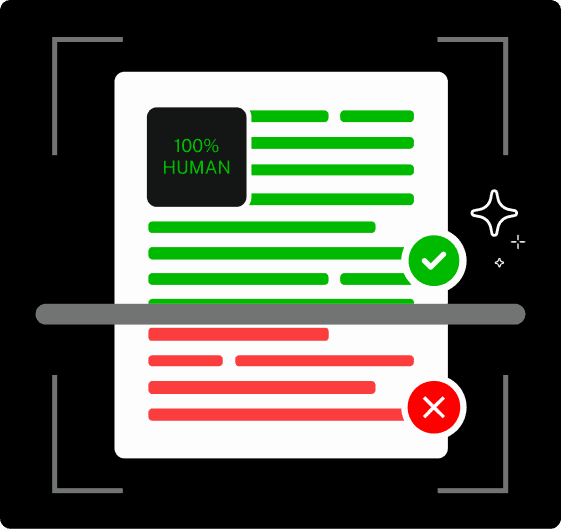
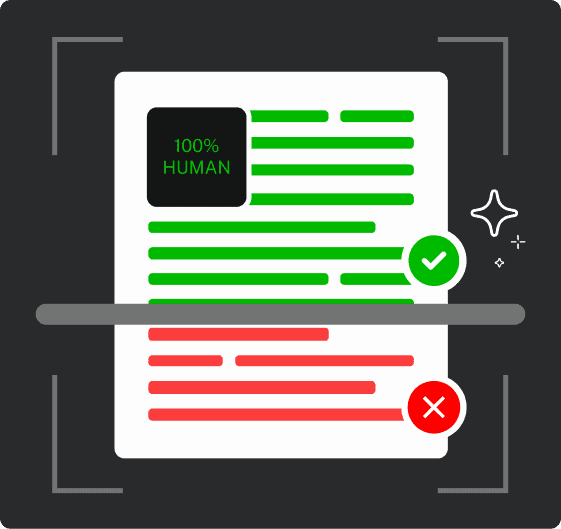
Never Worry About AI Detecting Your Texts Again. Undetectable AI Can Help You:
- Make your AI assisted writing appear human-like.
- Bypass all major AI detection tools with just one click.
- Use AI safely and confidently in school and work.
Author Information. Start with the author’s full name. If there are multiple authors, grab all of them. Some articles don’t have authors listed, and we’ll cover what to do in this case later. Don’t assume the website name is the author.
Article Title. Copy the exact title, including any subtitles. Pay attention to capitalization because different styles handle it differently.
Publication Details. You need the journal name, volume number, issue number, and page numbers. For online articles, you might need the website name and URL instead.
Publication Date. Look for the specific date when the article was published. This could be a full date, just a year, or sometimes a range. If you can’t find it, note that too.
DOI or URL. Digital Object Identifiers (DOIs) are like permanent addresses for online articles. They’re better than URLs because they don’t break. If there’s no DOI, grab the URL.
Access Date. For online sources, note when you accessed the article. This matters because web content can change or disappear.
Pro tip: Screenshot or save the article’s information page. Web pages change, and you’ll thank yourself later when you need to double-check the details.
How to Cite an Article in APA Style (7th Edition)
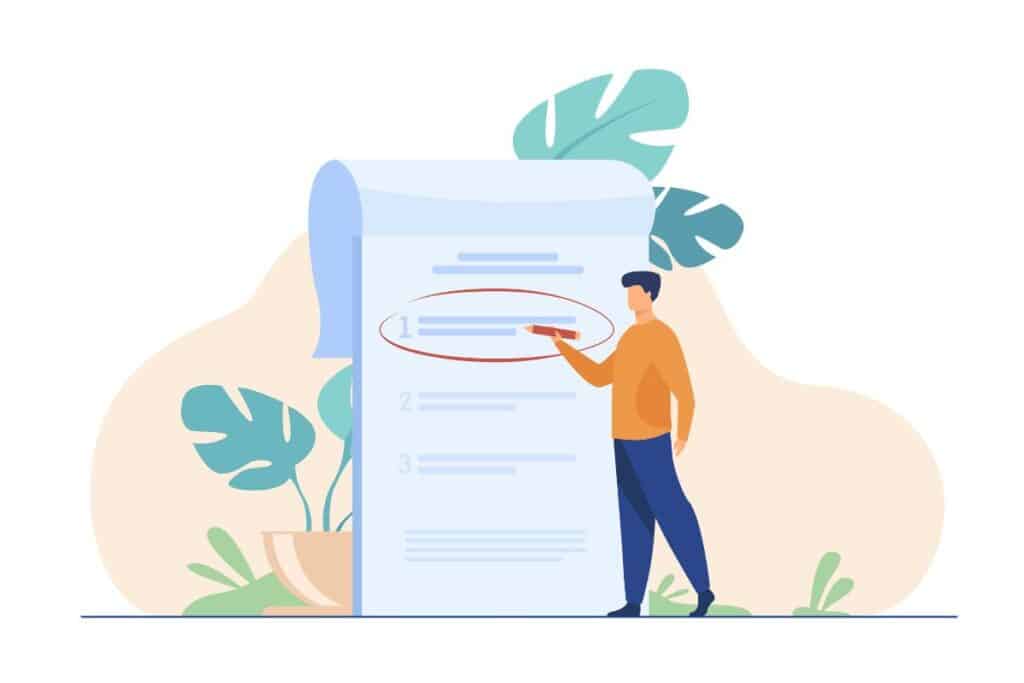
APA style is the go-to format for psychology, education, and most social sciences. It’s probably what you’ll use most in college unless you’re in the humanities.
- Basic Journal Article Format: Author, A. A. (Year). Title of article. Title of Journal, Volume(Issue), pages. DOI or URL
Real Example: Smith, J. K. (2023). Social media’s impact on teenage mental health. Journal of Adolescent Psychology, 45(3), 123-145. https://doi.org/10.1234/jap.2023.45678
- Online Magazine Article: Author, A. A. (Year, Month Day). Title of article. Title of Magazine. URL
Real Example: Chen, L. (2024, March 15). Why AI can’t replace human creativity. Wired. https://www.wired.com/story/ai-creativity-limits/
- Newspaper Article: Author, A. A. (Year, Month Day). Title of article. Newspaper Name. URL
- In-Text Citations: APA uses author-date format: (Smith, 2023) or Smith (2023) found that…
For direct quotes, add page numbers: (Smith, 2023, p. 127)
- Multiple Authors: Two authors: (Smith & Jones, 2023) Three or more: (Smith et al., 2023)
The beauty of APA is its consistency. Once you get the pattern down, it becomes second nature.
Want to speed up your APA citations?
Undetectable AI’s AI Chat tool acts like your personal writing assistant, ready to generate citations on command.
Just ask it to format an article in APA 7th edition, and it’ll give you both the reference list entry and the in-text citation, properly styled.
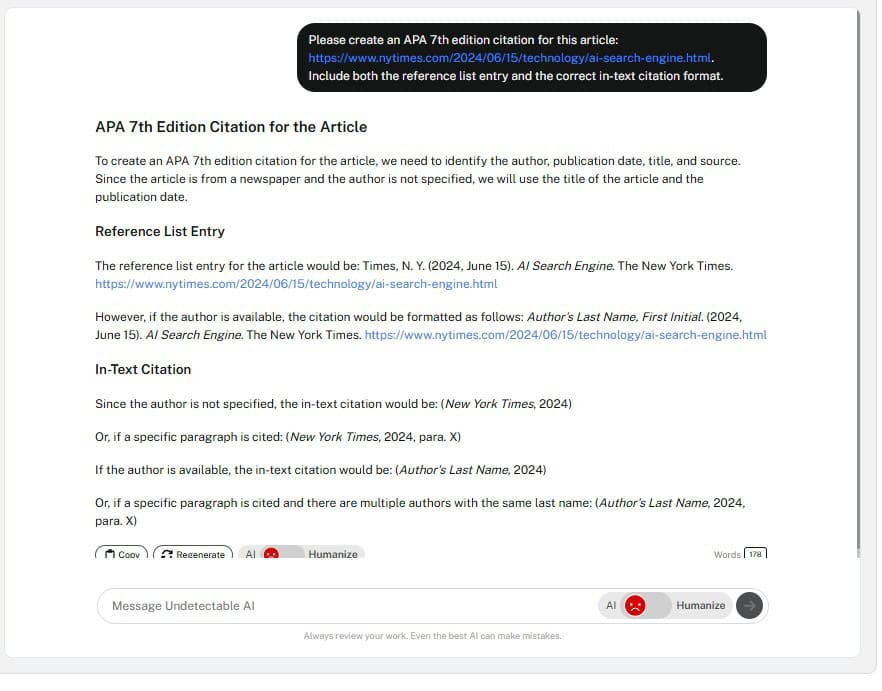
You can feed it a URL or a DOI, or manually enter the article details. Ask it to show the correct formatting for books, journal articles, websites, or news pieces.
It’s fast, accurate, and saves you from citation stress.
Want an even faster way to generate references? Our APA Citation Generator does all the formatting work for you.
Just enter the article’s author, title, publication date, and URL or DOI, and it instantly builds a clean, properly styled APA citation.
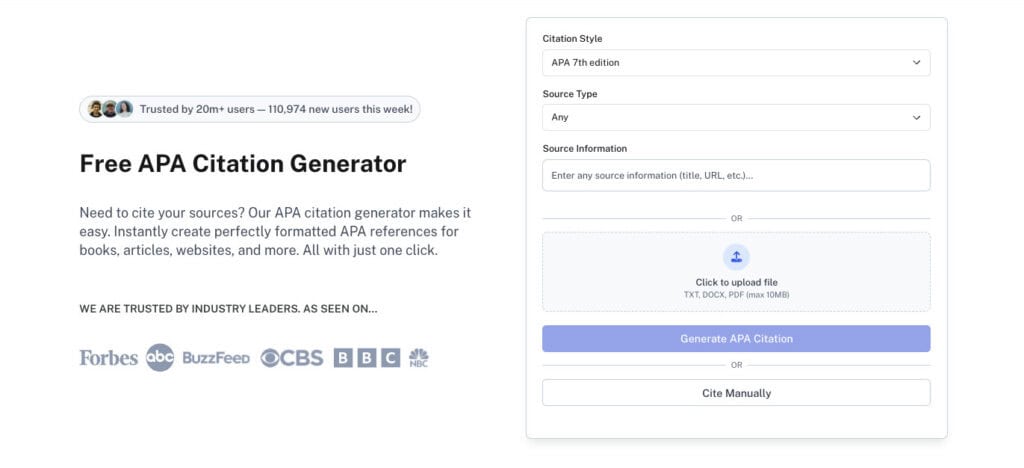
Whether you’re citing a scholarly journal or an online magazine, it’s the easiest way to streamline your reference list without second-guessing the details.
Tip: Try asking it to generate the full citation and explain how to use it in your paper.
How to Cite an Article in MLA Style (9th Edition)
MLA format is the standard for English, literature, and most humanities courses.
It focuses on page numbers rather than publication dates, which makes sense when you’re analyzing specific passages.
- Basic Journal Article Format: Author Last Name, First Name. “Title of Article.” Title of Journal, vol. #, no. #, Year, pp. #-#. DOI or URL.
Real Example: Rodriguez, Maria. “Climate Fiction in the Digital Age.” Modern Literature Quarterly, vol. 78, no. 2, 2024, pp. 45-67. https://doi.org/10.1234/mlq.2024.5678
- Online Magazine Article: Author Last Name, First Name. “Title of Article.” Magazine Name, Day Month Year, URL.
Real Example: Thompson, Alex. “The Return of Vinyl Records.” Rolling Stone, 8 Apr. 2024, https://www.rollingstone.com/music/vinyl-comeback-2024/
- Newspaper Article (Online): Author Last Name, First Name. “Title of Article.” Newspaper Name, Day Month Year, URL.
- In-Text Citations: MLA uses author-page format: (Rodriguez 52) or Rodriguez argues that “quote here” (52).
If no page numbers exist (common online), just use the author: (Rodriguez).
- No Author: Use the article title: (“Climate Fiction” 52)
MLA gets tricky with online sources because page numbers often don’t exist with digital articles or websites. The 9th edition has embraced this reality and simplified many rules.
If you’re working on a research paper in MLA format and want to wrap things up cleanly, try our MLA Citation Generator.
It doesn’t just build your Works Cited entries, it also helps you structure MLA-style conclusions by ensuring all sources are properly cited and tied back to your arguments.
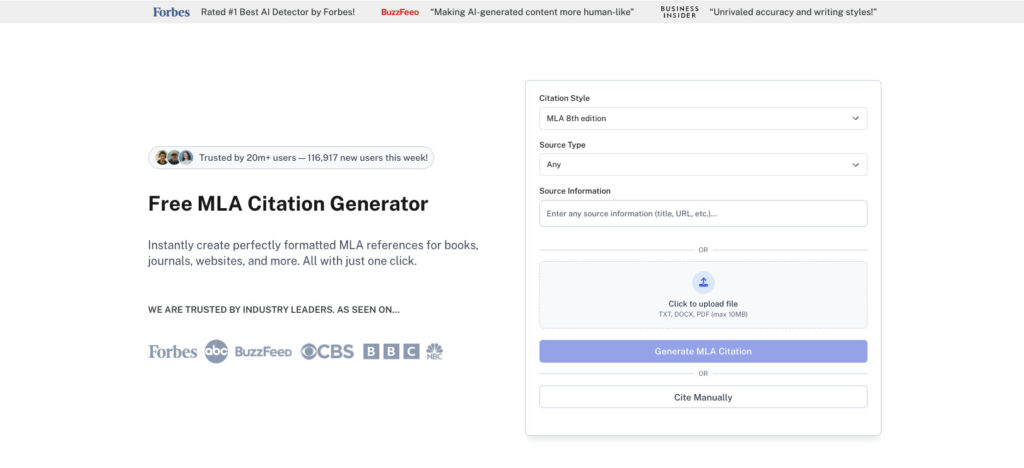
Just plug in your article details, and the tool handles the punctuation, page formatting, and citation order so your final paragraph and bibliography are ready for submission.
Need MLA citations in seconds? Try this too!
Let Undetectable AI’s AI Chat tool handle it. Whether you’re working with a book, website, or article, it can generate accurate MLA 9th edition formatting on the spot.
Just tell it what source you’re citing and ask for both the Works Cited entry and the in-text citation.
No more flipping through style guides. You’ll get clear, ready-to-use output tailored to your source.

How to Cite an Article in Chicago Style (17th Edition)
Chicago Style comes in two flavors: Notes-Bibliography (mostly for history and literature) and Author-Date (for sciences).
We’ll focus on Notes-Bibliography since it’s more common in undergraduate work.
- Journal Article (Footnote):
¹ Author First Last, “Title of Article,” Title of Journal Volume, no. Issue (Year): page, DOI or URL.
- Real Example:
¹ Sarah Martinez, “Digital Activism in the 21st Century,” Political Communication Review 34, no. 2 (2023): 89, https://doi.org/10.1234/pcr.2023.4567.
- Bibliography Entry:
Martinez, Sarah. “Digital Activism in the 21st Century.” Political Communication Review 34, no. 2 (2023): 78-95. https://doi.org/10.1234/pcr.2023.4567.
- Magazine Article (Footnote):
¹ Author First Last, “Title of Article,” Magazine Name, Month Day, Year, URL.
- Newspaper Article (Footnote):
¹ Author First Last, “Title of Article,” Newspaper Name, Month Day, Year, URL.
- Subsequent Citations: After the first full citation, you can use shortened versions:
² Martinez, “Digital Activism,” 92.
Chicago style prefers footnotes over parentheticals, which might feel retro, but it’s a powerful way to keep your sources front and center.
Undetectable AI’s Chat tool can instantly create Chicago 17th edition citations (Notes-Bibliography style).
Just give it the source details and ask for both the footnote and bibliography entry.
It’s fast, clean, and saves you from flipping through endless style manuals.
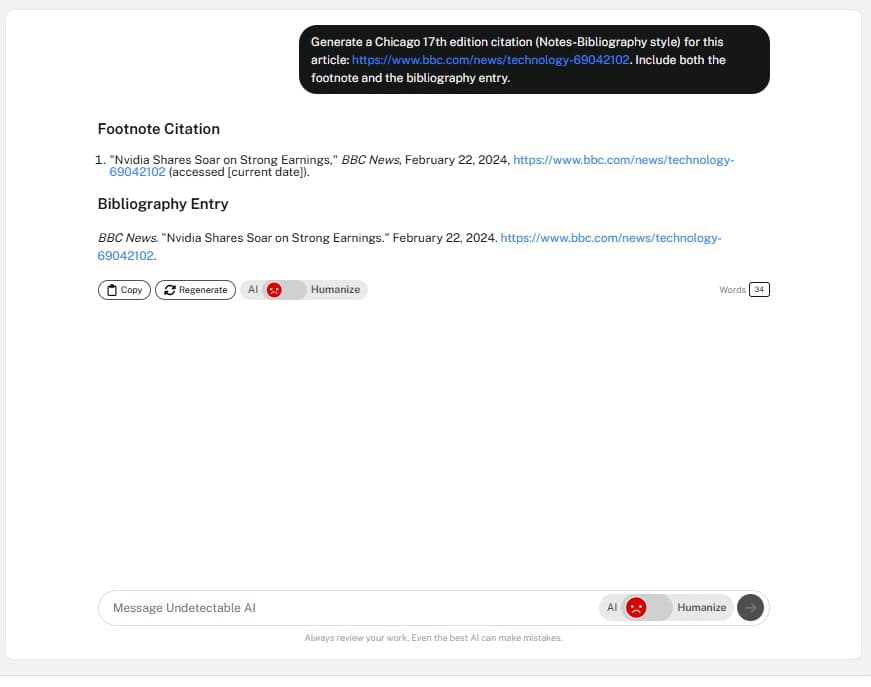
How to Cite an Article Without an Author
Sometimes articles don’t list an author. This happens with news articles, encyclopedia entries, and some online content. Don’t panic, there are rules for this.
APA Style (No Author): Start with the article title:
Climate change accelerates Arctic ice loss. (2024, January 15). Science Daily. https://www.sciencedaily.com/arctic-ice-2024
In-text: (“Climate change accelerates,” 2024)
MLA Style (No Author):
“Climate Change Accelerates Arctic Ice Loss.” Science Daily, 15 Jan. 2024, https://www.sciencedaily.com/arctic-ice-2024.
In-text: (“Climate Change Accelerates”)
Chicago Style (No Author):
¹ “Climate Change Accelerates Arctic Ice Loss,” Science Daily, January 15, 2024, https://www.sciencedaily.com/arctic-ice-2024.
Don’t use “Anonymous” unless the source specifically says “Anonymous.” If the website name is the same as the author’s name, skip the author and start with the title.
Some articles are written by staff writers but don’t list individual names. Treat these as no-author sources.
How to Cite an Article from a Database or Journal
Academic databases like JSTOR, ProQuest, and EBSCOhost are treasure troves of scholarly articles. But citing them requires some extra attention.
- The DOI Rule: If the article has a DOI, use it instead of the database URL. DOIs are permanent, database URLs aren’t.
- APA Database Citation: Author, A. A. (Year). Title of article. Title of Journal, Volume(Issue), pages. DOI
If no DOI exists: Author, A. A. (Year). Title of article. Title of Journal, Volume(Issue), pages. Database Name.
- MLA Database Citation: Author Last, First. “Title of Article.” Title of Journal, vol. #, no. #, Year, pp. #-#. Database Name, DOI or URL.
- Chicago Database Citation: ¹ Author First Last, “Title of Article,” Title of Journal Volume, no. Issue (Year): page, accessed Month Day, Year, Database Name.
Look for the “Cite” button in most databases. It usually provides formatted citations, but double-check them. Save the permalink or stable URL if provided. Note the database name you used to access the article.
Don’t include the library’s URL or your login information.
Some databases provide PDF versions that look like the original journal pages.
These should be cited like regular journal articles. If you accessed a database through your school, you don’t need to mention the school name.
Access our AI Detector and Humanizer directly through the widget below.
FAQs About Article Citation
What if there’s no publication date?
Use “n.d.” for APA, “No date given” for MLA, or check Archive.org. Always note your access date for websites.
Can I cite Wikipedia?
Yes, but it’s frowned upon in academic writing. Use it for background knowledge or find better sources in its references.
How do I cite in a slide deck?
Keep it short on slides (like Smith, 2023) and list full sources on a final references slide.
What if I forget to cite something?
Fix it fast. Add the citation, inform your professor or manager, and set up a better tracking system next time.
Cite Like You Mean It
Learning how to cite articles properly isn’t just about following rules.
It’s about joining the academic conversation, showing respect for other researchers, and building your own credibility as a writer.
The citation styles might seem overwhelming at first, but they all serve the same purpose: helping readers find and verify your sources.
Whether you’re using APA for your psychology paper, MLA for your English essay, or Chicago for your history thesis, the core principle remains the same.
Remember that citation rules evolve. The 7th edition of APA, the 9th edition of MLA, and the 17th edition of Chicago all reflect changes in how we access and share information.
Stay updated with the latest guidelines, and don’t be afraid to ask for help when you’re unsure.
The most important thing?
Start citing from the moment you begin researching. It’s much easier to keep track of sources as you go than to hunt them down later when you’re panicking about deadlines.
If you ever need a shortcut, Undetectable AI’s Chat tool is here to help. It can generate citations in any major style (APA, MLA, Chicago) and show you exactly how to use them.
